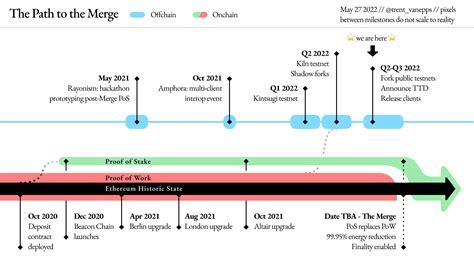The Impact of Faster Blocks on Ethereum Mining Centralization
Ethereum, one of the most popular blockchain platforms, has seen a surge in mining activity over the past year. The increased demand for computing power and the rise of decentralized applications (dApps) have led to an exponential growth in mining hubs, leaving many observers concerned about the potential implications for decentralization.
What is Mining Centralization?
Mining centralization refers to the phenomenon in which a small group of powerful miners controls a disproportionate amount of the network’s hashing power. This concentration of power can lead to several issues, including:
- Slower transaction times: As more miners join the network, the block reward and transaction processing time decrease, making it harder for smaller mining operations to compete.
- Increased Centralization of Power: Concentration of mining power leads to a higher likelihood of centralization, where a small number of powerful miners dominate the network.
How Faster Blocks Impact Mining Centralization
Faster blocks in Ethereum introduce several changes that can contribute to mining centralization:
- Increased Block Reward: Faster blocks reward miners with more computing power and lower transaction fees. While this increases overall hashing power, it also leads to a greater concentration of mining power.
- Reduced Block Time: With faster blocks, the block time decreases, allowing for more frequent transactions and increasing the likelihood of centralization.
- More Powerful Mining Equipment

: The increased computing power of faster blocks can lead to more powerful mining equipment, making it harder for smaller miners to compete.
How does mining centralization work?
The impact of faster blocks on mining centralization is a complex issue that affects several aspects of the Ethereum ecosystem:
- Network congestion: As more miners join the network, block times and transaction processing times decrease. This congestion can lead to slower transaction times and increased centralization.
- Increased difficulty: The higher computing power of faster blocks requires more energy to mine, which can lead to increased difficulty and slower mining speeds for smaller miners.
- Centralized mining operations
: The concentration of mining power leads to the emergence of centralized mining operations, where a small group of powerful miners dominate the network.
Conclusion
The introduction of faster blocks to Ethereum has important implications for decentralization. While increasing computing power can lead to more efficient mining, it also increases the likelihood of centralization and slows transaction times. As the Ethereum ecosystem continues to evolve, it is critical to address these issues and promote a more decentralized network.
Recommendations
To mitigate the effects of faster blocks on mining centralization:
- Implement difficulty adjustment mechanisms: Regularly adjust difficulty levels to maintain an optimal level of mining power for smaller miners.
- Increase mining rewards for smaller miners: Implement mechanisms that reward smaller miners with more computing power and transaction fees, ensuring they have a fair chance to compete.
- Promote decentralized application development: Encourage the development of decentralized applications (dApps) and other use cases that can help reduce mining centralization.
By understanding the impact of faster blocks on mining centralization in Ethereum, we can work towards creating a more decentralized network that benefits all users.
Để lại một bình luận